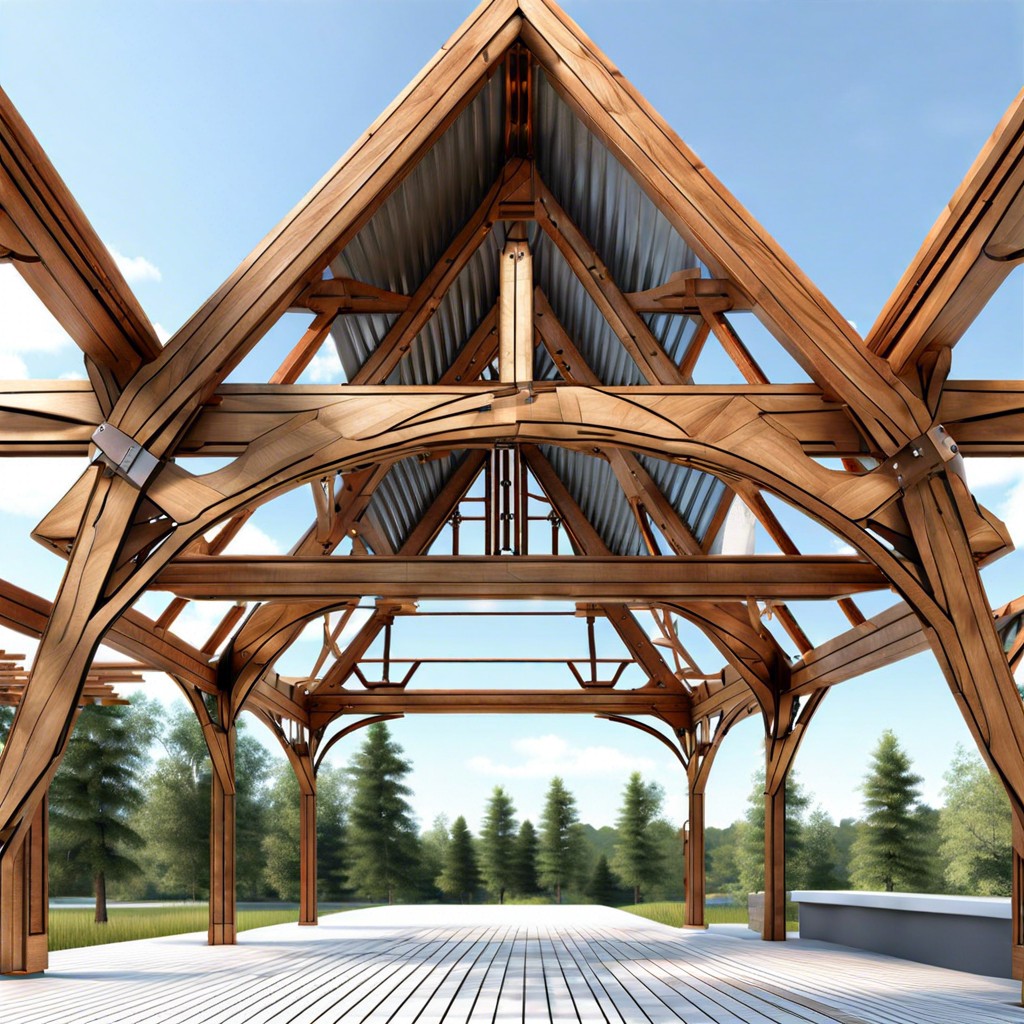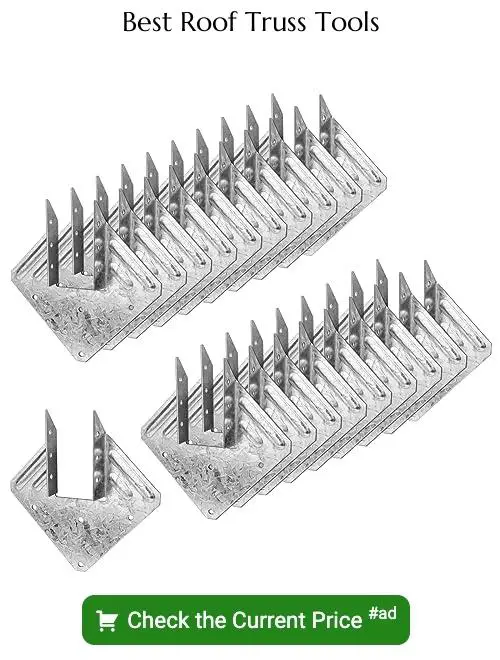Last updated on
Discover everything you need to know about roof trusses, from their functions and types to their benefits and installation tips.
Key takeaways:
- Trusses are triangular for strength and stability.
- Components of a truss: top chords, bottom chords, webbing.
- Pre-fab trusses reduce on-site construction chaos.
- Different types of trusses for specific needs and requirements.
- Wood trusses are affordable, steel trusses are strong, aluminum trusses are versatile.
What Is a Roof Truss?

Think of it as the skeleton of your roof—the truss holds everything together. It’s a pre-engineered structure, usually made from wood or metal, that supports the roof’s weight and transfers that load to the building’s walls.
Here are the basics:
– Triangles Everywhere: Roof trusses are designed in triangular shapes due to their strength and stability. Triangles distribute weight evenly and resist bending and twisting better than other shapes.
– Components Galore: The main parts of a truss are the top chords (the sloping beams you see in the attic), bottom chords (the horizontal beams), and webbing (the stuff filling the gaps and connecting the chords).
– Pre-fab Magic: Most trusses are built off-site in controlled environments, ensuring they’re precisely made and reducing on-site construction chaos.
– Variety Show: There are many kinds of trusses like the King Post, Queen Post, and the fancier Attic truss, each designed for specific needs and structural requirements.
Imagine the truss as the unsung hero of your house. Sure, it’s not glamorous, but without it, your roof wouldn’t stand a chance!
Pre-fabricated Wood Trusses
These marvels of engineering arrive ready-made, like that artfully sculpted cake you wish you could bake yourself but always botch. Pre-fabricated wood trusses are built in a controlled factory setting, ensuring precision and consistency. No more on-site guesswork or questionable carpentry.
Why consider them? Well, for starters:
- Easy Peasy Installation: They slot together like an adult-sized Lego set, speeding up construction time and reducing labor costs.
- Strength Meets Flexibility: Designed to bear heavy loads, they offer superior structural support while still being adaptable to various designs.
- Wallet-Friendly: Despite the upfront price, they often save you money in the long run by minimizing waste and cutting down on installation hours.
- Eco-Warrior: Made primarily from sustainable wood sources, they’re a greener choice for the environmentally conscious among us.
In summary, pre-fabricated wood trusses not only take the headache out of building but also promise durability, cost savings, and an environmentally friendly option. Ready to streamline your roof-building experience?
Roof Truss Cost
When it comes to the wallet-impacting aspects, roof trusses aren’t shy about strutting their stuff. Here’s what you’ll need to know.
First off, size matters. The larger the span, the deeper your pockets need to be. A small garage will be more forgiving than a grand ballroom.
Next up, design complexity. Simpler designs sulk in the cheaper section, while intricate ones are the rockstars demanding more dollars. Think of it as the difference between a plain bagel and an everything-with-extra-cream-cheese delight.
Material plays a starring role too. Standard wood trusses tend to be more affordable, but if you fancy metal, be prepared for a bit of sticker shock.
Customization can throw you a curveball. Pre-fab trusses are budget-friendly, but once you start customizing, costs can sneakily add up. Customization is like ordering extra guac at a burrito joint—fantastic, but not free.
Labor is another factor. Installing trusses isn’t an afternoon picnic, unless your picnics involve cranes and hard hats. Labor costs can vary based on your location and the complexity of your truss system.
Lastly, market conditions can make the cost fluctuate like a yo-yo. Keep an eye on material prices and demand, as these can impact your final bill.
No one likes a surprise bill, so consider these aspects before diving into your truss project.
Cost By Truss Material
Wood trusses are usually the most wallet-friendly option. They’re like the thrift store find of the roofing world: reliable and budget-friendly. Plus, they come in a variety of designs to suit different needs.
Steel trusses, on the other hand, are like the luxury sedan of roof supports. They’re pricier but they come with perks like longevity and strength. Great for those who want their roof to double as an apocalypse bunker.
Then you’ve got aluminum trusses, the middle ground. They’re lighter than steel, still robust, and resist rust like a champ. If aluminum trusses had a social media profile, it would say “best of both worlds.”
Each material option varies in cost, but always gives you the best bang for your buck based on your specific needs. So, choose wisely—your wallet and your roof will thank you!
Other Factors That Influence Roof Truss Cost
Geographical location plays a significant role. Building in a metro area? Get ready to spend a bit more. Rural areas? Might save a few bucks. Just don’t count on a wild west adventure being cheap!
Complexity of design is another factor. Fancy cathedral ceilings and customized layouts? Expect a spike in cost. Simple designs? Your wallet breathes easier.
Material wastage is sneaky but real. Orders that don’t precisely match your needs can lead to wastage—and extra costs. Measure twice, pay once!
Labor costs vary. Hiring a seasoned pro versus a novice will impact your budget. Sometimes that extra experience saves headaches and money in the long run, so choose wisely!
Finally, roof loads are like invisible weightlifters. Snowy areas? You need stronger trusses to support the load, and yes, extra strength demands extra dollars. Balmy beach house? Lucky you, smaller load equals smaller bill.





